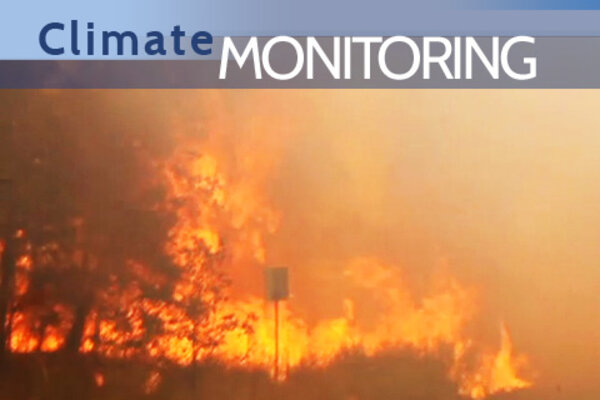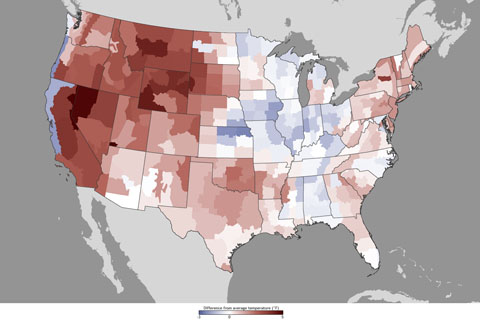
According to the latest statistics from NOAA’s National Climatic Data Center, September 2012 marked the sixteenth consecutive month with above average temperatures for the Lower 48. Meanwhile, warm and dry conditions persisting in the Northwest have led to yet another month with above-average wildfire activity in the region.
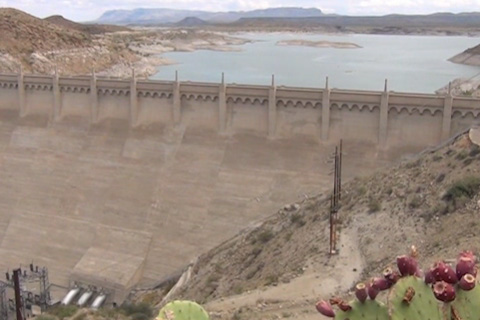
On the Rio Grande—historically the wellspring for more than five million people in Colorado, New Mexico, Texas, and Mexico—coping with scarcity has become a reality, and water management and use in the region may be a leading example of how to adapt to drier times
As March began, people living the eastern United States were enjoying warmer temperatures, budding flowers, and other signs of the approaching spring season. But on the opposite coast, a series of wintry storms rolled through the already snow-packed Cascades, leaving behind several feet of powder and sparking avalanche warnings throughout the region.
In the wake of historic flooding along the Missouri River in spring and summer 2011, NOAA scientists are exploring how climate patterns like La Niña and others can set the stage for floods or drought in the Northern Rockies and the Upper Great Plains.
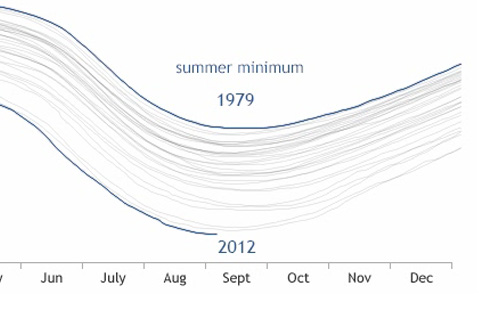
Arctic sea ice extent set a new record low at the end of the summer melt season on September 16, 2012. But extent is not the only quality of the ice that is changing. Wind and ocean circulation patterns are conspiring with a warmer climate to reduce the amount of year-round (multi-year) ice, transforming the remaining ice into a younger, thinner version of its old self.
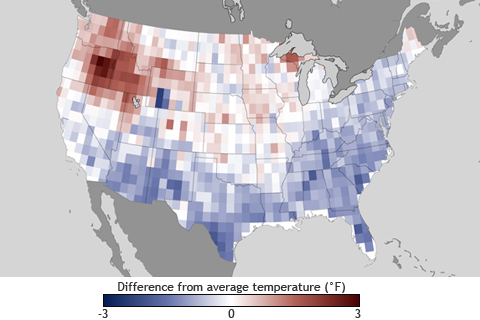
According to NOAA’s Climate Prediction Center, weak El Niño conditions may develop this fall. How might a full-fledged El Niño event this winter influence weather where you live?
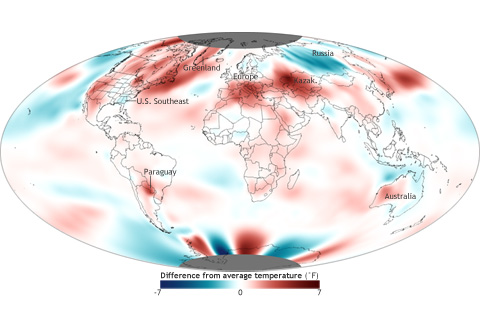
The average global temperature for August 2012 was more than 1° Fahrenheit above the 20th-century average, according to the latest monthly analysis from the National Climatic Data Center, making it the fourth-warmest August since record keeping began in 1880. August 2012 also marked the 36th consecutive August and 330th consecutive month with a global temperature above the 20th-century average.

In a place routinely afflicted by drought, water managers in Tampa Bay use climate forecasts to ensure a water supply to people’s taps without sucking the region’s rivers, wetlands, and groundwater dry. The limits of their innovation might be tested in a future which could pose even more challenges to ensuring the oasis remains green.

Downpours and Droughts: Timing is Everything
September 10, 2012
